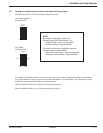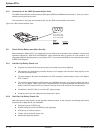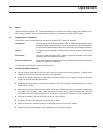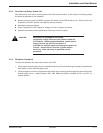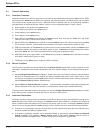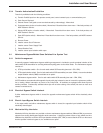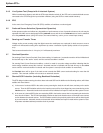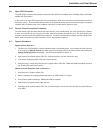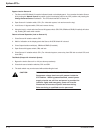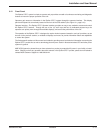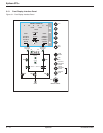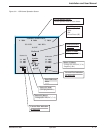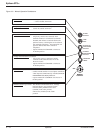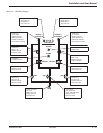
3.4.5 Live System Test (Except with 4-Interlock System)
While in maintenance bypass, and with the STS output isolation switch off, the STS can be tested with both sources
connected to the STS through the input isolation switches (using the SCR's to make actual transfers).
3.4.6 EPO
In the event of an Emergency Power Off (EPO) condition, all switches are shunt tripped.
3.5 Preferred Source Selection (Symmetrical Operation)
At the operators option and without any degradation of performances or loss of protective features, the unit may be
operated with either source designated as the preferred source and the current alternate source can be switched
to be the preferred source (using LCD screen, the manual hard key, comm. port or remote input contact).
3.6 Sensing and Transfer Times
Voltage and/or current sensing using fast digital conversion techniques are employed for both sources to meet a
maximum 2 milliseconds sensing time
requirement (to sense a deviation of power quality outside of user parame-
ters).
Total sense and transfer time is 1/4 cycle (4.17 milliseconds) maximum.
3.7 Overload Operation
On sensing a Peak Current Overload (Crest factor setting: 3.5 maximum.), automatic transfers will be inhibited and
the load will stay on the “active” source until the overload condition is cleared.
On sensing Peak Current Overload condition, a check is made for an under-voltage condition indicating that the
under-voltage condition caused the overload. Automatic transfer is inhibited and the load will stay on the active
source until the overload condition is cleared and the system is reset (this fault condition is memorized).
An Overload alarm will be given if the load current exceeds the RMS current overload setting for more than 30
seconds. This overload condition will not cause an automatic transfer.
3.8 Shorted SCR Protection (including Backfeed Protection)
The STS design includes sensing circuits to detect a shorted SCR and in addition to the following actions, will initiate
audible and visual alarms:
a) In the event of a shorted SCR in the active source powering the load, the unit will alarm, and stay on the active
source. Then the SCR isolation switch on the inactive source will be shunt tripped to prevent transferring to the
inactive source. Automatic transfer and retransfer will be inhibited until repair is made and the system is reset.
b)
In the event of a shorted SCR in the non-conducting SCR in the inactive source that is not powering the load at the
time, the unit will alarm. The STS will immediately transfer the load to the inactive source to eliminate cross-connect
current between the shorted sources. The SCR isolation switch in the previously active source will be shunt tripped
to prevent retransfer. Automatic transfer and retransfer will be inhibited until repair is made and the system is reset.
A separate redundant backfeed protection circuit is provided.
Epilson STS
TM
Operation3 —6 86-504004-00 B03




